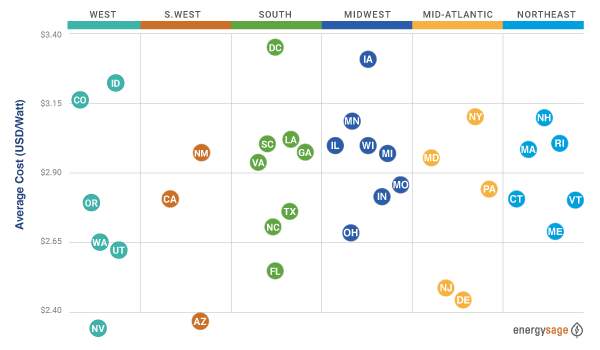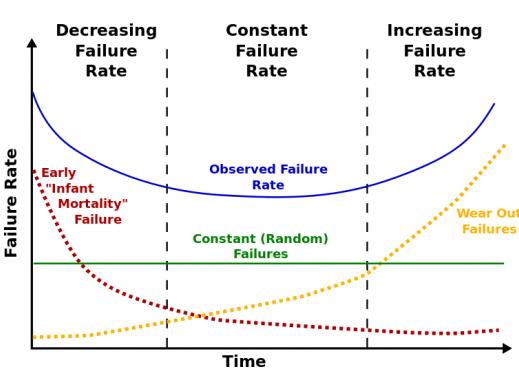
This updated version of “How Much Does a Solar System Cost” summarizes the factors impacting the pricing of a solar system and relies on new data, financing options, and policies to produce an accurate estimate of what one can expect to pay for a solar installation in 2021. Here we take a closer look at the realities of residential solar costs in todays’ market and provide a reliable resource for those not yet sold on solar.
Ballpark Estimate
Let’s assume all current national average figures apply to this equation. The EIA reports that average US monthly residential consumption of electricity is near 877 kWh per month, and at ¢13.01/kWh, that comes to an electricity bill of $115.49 per month. With an average 150 hours of solar resource available across the states, a 5.8kW solar system would be appropriate to offset electricity costs.
Using 5.8kW, or 5,800 watts, as our system size, and per the latest national averages from EnergySage, $2.81 cost per watt, will land us at a ballpark figure of $16,298 before federal, state, and local incentives are applied. The chart below from EnergySage demonstrates how the 2021 average solar prices in cost per watt vary by state in the U.S.

This is a modest estimate considering the many variables that determine pricing a solar installation. Generally, solar experts propose that an average installation cost will fall between $15,000 and $25,000. A larger residential solar system, such as a 10kW system, will require greater upfront installation costs but will significantly reduce long-term utility costs, providing serious savings for the homeowner and increasing the overall value of the property. Let’s now walk through the different factors that will impact this overall cost.
Incentives and Rebates
The government’s ability to enforce certain changes through policy and incentives is significant. The 26% federal investment tax credit, or ITC, enables one to deduct said percentage of their solar install costs from federal taxes. Intended to push solar market growth exponentially, the 26% ITC was recently extended through 2022 as congress delayed a proposed ITC step down last year.
The ITC is only one sample of the available rebates, loans, and financing options created to stimulate the industry by giving solar an even further competitive advantage. State-adopted virtual net metering is on the rise and represents the evolving policy designed to help consumers save money and increase solar adoption.
Interested in more financial resources? Our Solar Financing for Property Owners article breaks down different types of solar loans and power purchase agreements (PPAs). You can also reference our article on 2020 State Solar Storage Incentive Programs to find out how your state provides incentives to go solar.
Your Solar System
At the end of the day, one’s installation cost will mainly come down to the details of a unique solar system. Particular orientation, shading, and surface area specifications can require one to disperse extra resources for proper installation. One’s state of residence and latitudinal placement also play a huge factor. These will determine price per watt and hours of daily solar resource which both significantly impact pricing.
Between 10-50% of an overall solar installation cost relates to choices regarding the balance-of-system (BOS). The term BOS covers most components of a system including inverters, racking, switches, cables, and fuses. You also need to know if you would prefer to install a backup battery? Will you rely on an off-grid, hybrid, or grid-tied system? If you’re going for an off-grid or hybrid system, which charge controller is best for you? Our BOS article contains guidance on cultivating an efficient and cost-effective BOS environment.
Want a more personalized estimate for your solar installation? The most accurate way to determine one’s unique cost is to receive a quote from your installer. Contact us to easily connect with an installer and discuss your next solar project today!
Article updated from an original article written by Kerim Baran.
Further Resources
- Center for Sustainable Energy: How much does a typical residential solar energy system cost?
- Energy Sage: How much does a solar panel installation cost?
- 3 Recent RPS Changes and What They Mean for You & Solar
- Carbon Brief: Solar now ‘cheapest electricity in history’
- SEIA US Solar Market 2020 Update
- SEIA Solar Investment Tax Credit (ITC)
- Solar Reviews Solar Loans: Everything You Need to Know



